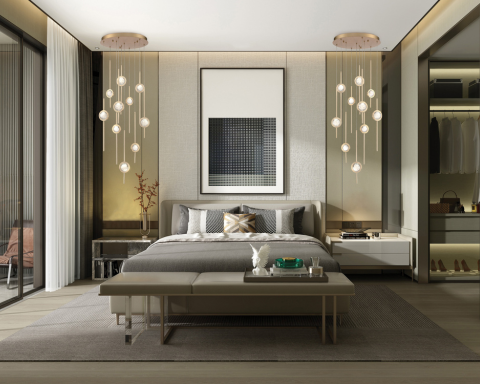Free Ground Shipping on Orders Over $49 Details & Exclusions Excludes Curb Side Delivery (LTL). Lower 48 United States Only.
Sep 2, 2013
Be Brilliant with the Right Crystal Chandelier
 Buying a crystal chandelier is a bit like buying a diamond ring. It’s a matter of style, but the quality and brilliance of the piece—as well as your budget—should inform your final decision. A beautiful crystal fixture should be worthy of passing on to the next generation.
Buying a crystal chandelier is a bit like buying a diamond ring. It’s a matter of style, but the quality and brilliance of the piece—as well as your budget—should inform your final decision. A beautiful crystal fixture should be worthy of passing on to the next generation.
Determining Crystal Quality
Crystal quality depends on both the mineral content (usually lead oxide) and the manufacturing process. Lead crystal generally has a lead content of at least 20 percent, with a maximum around 30 percent. Some types of crystal may substitute or add other oxides in addition to lead. The oxide decreases the glass’s strength and makes it more fragile, but increases the crystal’s refractive properties for increased brilliance and color.
How each crystal is crafted drastically affects the quality as well. At one end of the spectrum, crystal can be poured into a mold and chemically or fire-polished for a product that’s not as sharply refractive but is more affordable. On the other end, some crystal is machine cut for precision and hand polished, with a high degree of optical purity and brilliance.
A crystal with a high degree of optic purity—the ability to let light pass through unhindered by flaws—will be completely clear, without striations to distort the spectrum. On hand-cut or finished pieces, small chill waves may be visible but simply a sign of craftsmanship, rather than a blemish. While quality control should weed out crystal with flaws, be aware that crystal with white, cloudy or non-reflective properties is always a lower quality crystal.
Many “imitation crystal” chandeliers at home improvement box stores are actually glass, since the real McCoy is too valuable. These chandeliers can still be stunning, but they lack the oxides that create optical purity and brilliancy in true crystal.
As with many lighting choices, your personal tastes dictate your final decision. Crystal artisans have used many different methods and slightly different mineral compositions over the centuries, and many of these processes are still in use today. A few of the most common types are:
Italian: These crystals are shaped in a mold rather than cut, and fire polished. The polishing method creates a slightly indented surface and softer edges instead of a sharp facet, and are more affordable than other crystal types.
Murano: This hand-blown crystal embodies “Made in Italy” craftsmanship, and can be shaped more intricately.
Egyptian: Although a step down in price from Swarovski crystal, the high lead content and machine-cut manufacturing of this crystal provides a stunning degree of brilliance, though a slightly lower degree of optical purity.
Swarovski Spectra: Swarovski has well earned their reputation as the finest crystal in the world. These crystals contain 30 percent lead oxide and are machine cut for symmetry. They are hand polished and optically pure. Their reputation, however, makes them second in price only to Strass crystals.
Lead-free: Bohemian, Turkish, Heirloom and Czech crystal are not true “crystal” because they contain no lead oxide (often substituting soda ash). However, it takes a practiced eye to see the difference between this kind of “crystal” and Strass.
Strass: If Swarovski crystals are the gold standard, Strass is the platinum. These crystals are very similar to Spectra, with an added protective coating and the laser-cut Strass emblem on each crystal.
Sizing the Chandelier
The multiple faces of a lead crystal prism magnify and reflect light in all colors of the rainbow, and a huge chandelier can overwhelm a room. Follow the usual guidelines on how to size a chandelier for proper proportions.
Keep in mind that a crystal chandelier should be at least four feet from the wall on either side. For an approximate fit, take the length and width of the room and add them together. Convert feet to inches to find the recommended diameter of the chandelier.
Also, consider a dimmer switch so you can adjust the brightness; a crystal chandelier lends formal elegance to a room, and you may find occasions that call for softer lighting than your everyday needs.
Crystal chandeliers are truly timeless pieces that can last for generations with proper care. These pieces are heirlooms as well as light fixtures, full of classical beauty that will last a lifetime.




